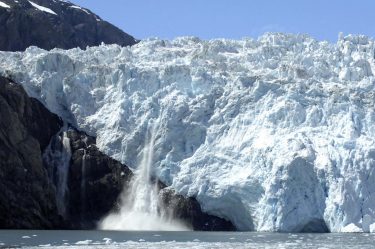
As glaciers worldwide retreat due to climate change, managers of national parks need to know what’s on the horizon to prepare for the future. A new study from the University of Washington and the National Park Service measures 38 years of change for glaciers in Kenai Fjords National Park, a stunning jewel about two hours south of Anchorage.
The study, published Aug. 5 in The Journal of Glaciology, finds that 13 of the 19 glaciers show substantial retreat, four are relatively stable, and two have advanced. It also finds trends in which glacier types are disappearing fastest. The nearly 670,000-acre park hosts various glaciers: some terminate in the ocean, others in lakes or on land.
“In Alaska, much glacier retreat is being driven by climate change,” said lead author Taryn Black, a UW doctoral student in Earth and space sciences. “These glaciers are at really low elevation. It’s possibly causing them to get more rain in the winter rather than snow in addition to warming temperatures, which is consistent with other climate studies in this region.”
Read more at UW News »
